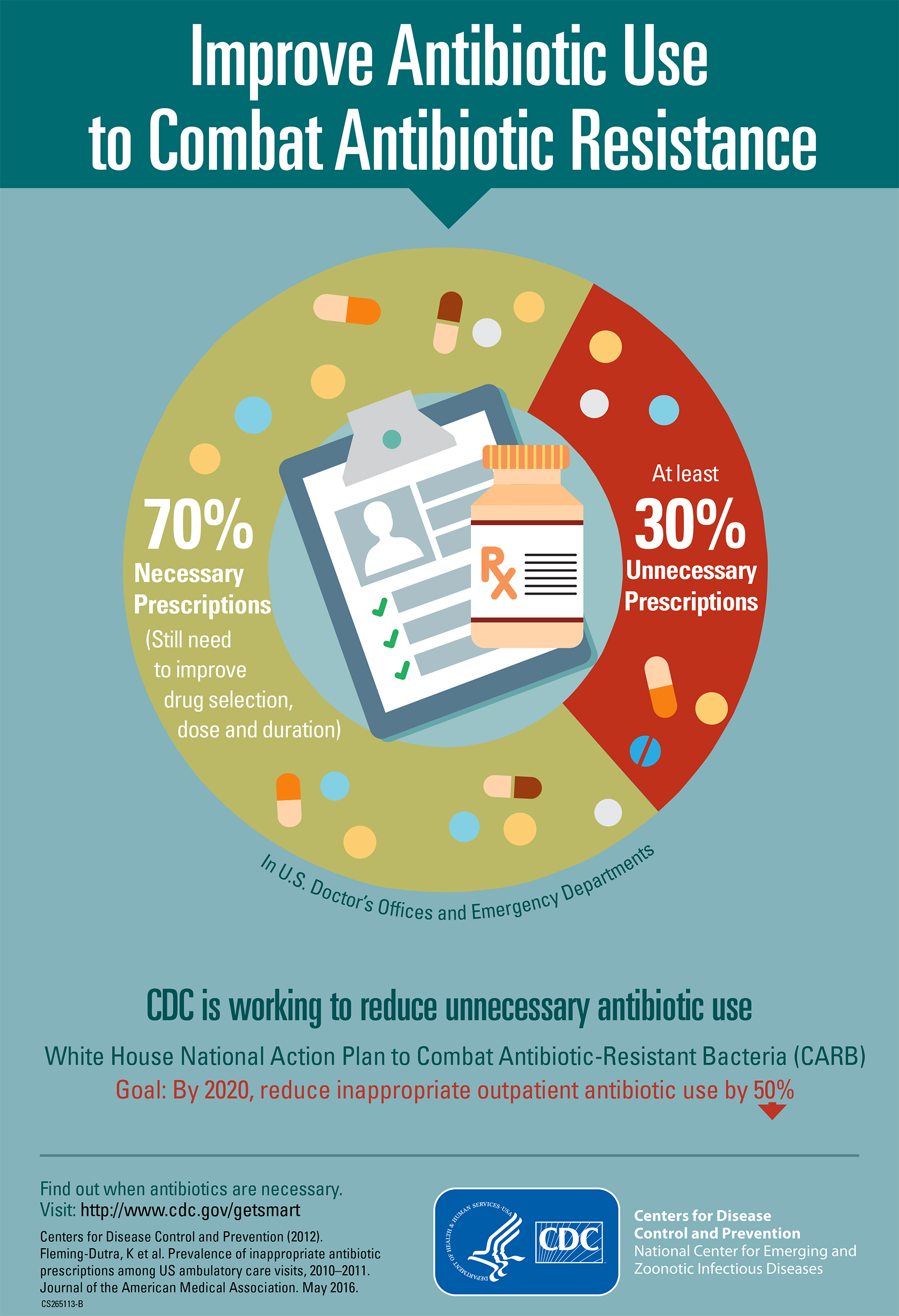March 6, 2020 by John Fernandez
One-Third of Antibiotic Prescriptions Are ‘Unnecessary,’ CDC Finds

Antibiotics do not fight infections caused by viruses such as colds, most sore throats and bronchitis cases, and some ear infections. Nonetheless, 1-in-3 antibiotic prescriptions in the U.S. are given to treat those infections, making the doses unnecessary and a potential health threat, according to new data published today in the Journal of the American Medical Association (JAMA) by the U.S. Centers for Disease Control and Prevention (CDC).
CDC researchers, in collaboration with Pew Charitable Trusts and other public health and medical experts, reviewed antibiotic use at doctors’ offices and emergency departments throughout the U. S.
The study found that most unnecessary antibiotics are prescribed for respiratory conditions caused by viruses – including common colds, and viral sinus and ear infections – which do not respond to antibiotics.
One-third of distributed antibiotics amount to 47 million excess prescriptions each year, which put patients at risk for allergic reactions or the sometimes deadly diarrhea, Clostridium difficile, the CDC says. Moreover, the widespread and growing misuse of antibiotics is posing a potential public threat that may lead to future antibiotic-resistant infections, according to the CDC.
In many cases, physicians unnecessarily prescribe antibiotics to children, mostly to appease parents or other caregivers who have requested antibiotics to treat viral infections. If antibiotics are used too often, they can stop working when a child really needs the medication to work effectively against bacteria, said Yeisel Barquin, M.D., an internist and family physician with Baptist Health Primary Care.
“We are over-treating with antibiotics, especially children, but their bodies are capable of healing themselves when it comes to viral infections,” Dr. Barquin said. “Antibiotics over time can kill a child’s normal (gut) flora, which can lead to digestive problems and potentially fuel obesity because the child doesn’t have the good bacteria needed for digestion.”
In 2015, the White House unveiled The National Action Plan for Combating Antibiotic-Resistant Bacteria (CARB), which set a goal of reducing unnecessary outpatient antibiotic use by at least half by 2020. This means that 15 percent of antibiotic prescriptions (or half of the 30 percent that are unnecessary) must be eliminated by 2020 to meet the CARB goal, the CDC says.
“Antibiotics are lifesaving drugs, and if we continue down the road of inappropriate use we’ll lose the most powerful tool we have to fight life-threatening infections,” said CDC Director Tom Frieden, M.D. “Losing these antibiotics would undermine our ability to treat patients with deadly infections, cancer, provide organ transplants, and save victims of burns and trauma.”
Antibiotics: What Not to Do
According to the CDC:
- Do not demand antibiotics when a doctor says they are not needed.
- Do not take an antibiotic for a viral infection like a cold or most sore throats.
- Do not take antibiotics prescribed for someone else. The antibiotic may not be right for your or your child’s illness. Taking the wrong medicine may delay correct treatment and allow harmful bacteria to increase.
If your doctor prescribes an antibiotic for a bacterial infection:
- Do not skip doses.
- Do not save any of the antibiotics for the next time you or your child gets sick.
“People need to understand that conservative treatment of symptoms is the proper thing to do to overcome viral infections,” Dr. Barquin said. “Antibiotics have serious side effects that can diminish the body’s ability to fight off other types of infections.”

top stories












There are no comments